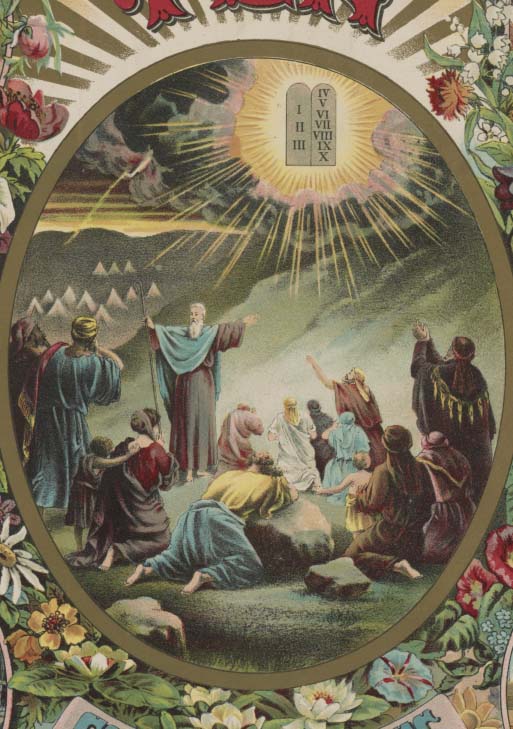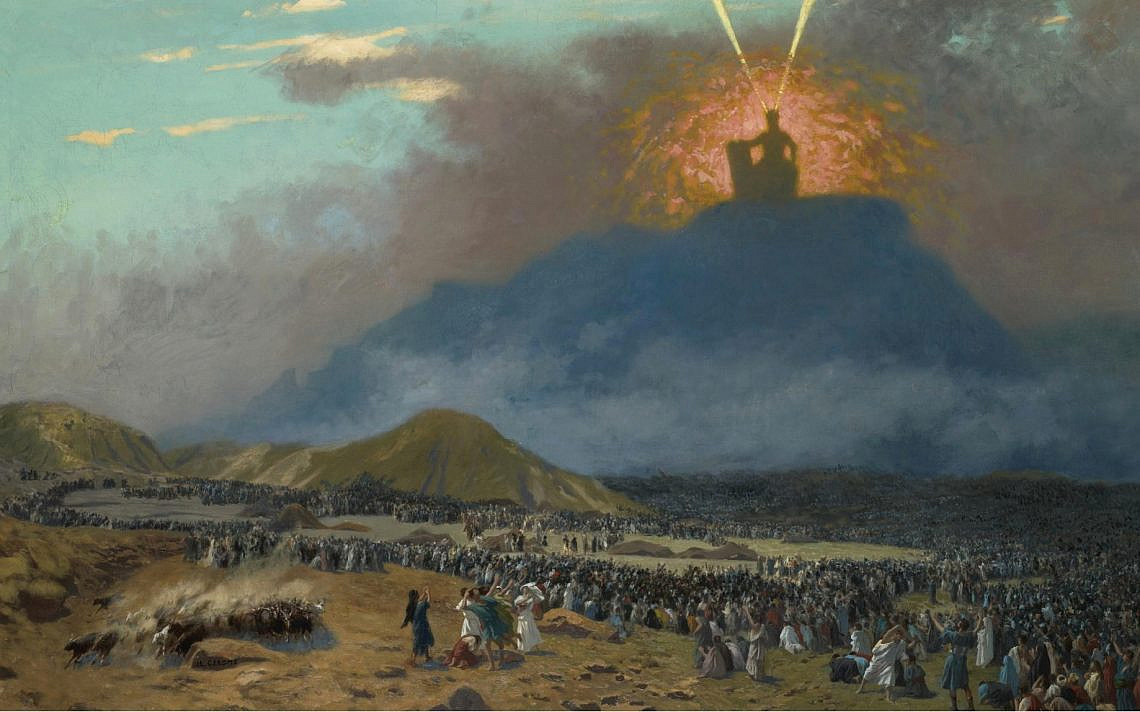

Originally published in Times of Israel
Many of us have lived without in-person community for over two months now. How does this bode for our experience of Shavuot this year?
The Israelites stood at Mt. Sinai “כאיש אחד בלב אחד” — as one person with one heart. This image describes unity — a single person with shared intention. And whether people at the original revelation were actually able to achieve this, it is nearly impossible for people to share the same intention even when they participate in shared action. We have many hearts –many reasons for being at Sinai, even if our presence seems uniform. Some come to receive the Torah out of religious faith — and even then, some focus more on interpersonal religiosity, some on devotional religiosity between human beings and God — others out of family loyalty, curiosity, nostalgia, and some came with one idea in mind only to arrive for another reason. The list is infinite. And yet, we appear at Sinai annually as one to receive the Torah on Shavuot through our communal commemorations.
The phenomenon of creating a sense of shared reality, even if, internally, we are all of different minds, is borne of what Adam Seligman calls the “ritual self.” The ritual self is who we are when we perform repeated acts that are shared within a group or a society. The ritual self is not always about religion: for instance, when we ask someone “how are you?” whether we want to know or not, that is the ritual self in action. We are participating in an activity that means something in our community, even though we cannot know how much we share under the surface. What am I feeling during that shared action? What are others who share in it feeling? No one knows exactly how others feel or what they think in those moments. And yet, we are content to share the performance with each other because we all value it. It is good enough to be כאיש אחד, like one body — offering external uniformity. The rest remains ambiguous.
The ritual self differs markedly from the “sincere self.” The “sincere self” (also Seligman’s coinage) refers not to external action, but to internal beliefs, opinions, and intentions. How do I feel? What do I want? What do you believe? What do you want? We are so adamant about the sincere self today: we have ideological and purity tests that determine whether we are aligned or whether you are on some other time. We need to have a לב אחד, one heart, in order to be in community.
To illustrate the difference, consider two forms of the declaration, “I love you” — the one you say when you feel it deeply (sincere) and the one you say when you know your loved one needs to hear it (ritual), regardless of how you are feeling. People are shaped profoundly by both.
Taken to the extreme, both the ritual self and the sincere self can become fundamentalist: the ritual extreme can erode critical thinking, individual needs, and personal connection to one’s actions. The sincere extreme can lead to witch hunts, self-centeredness and self-aggrandizement. In the aggregate, the ritual self and the sincere self should balance each other out even if sometimes we need to focus on one more than the other. In other words, we each should have opinions and beliefs and personal understanding of rituals, but our thoughts and feelings should not dictate everything. We should participate in the communal ritual in a way that respects the larger community, but we should also be invested in our own experience and meaning making.
With many synagogues shuttered, during this COVID-19 shelter-in-place moment, our Jewish lives are demanding an excess of sincere self, but not enough ritual self. We are challenged to work on our own religious integrity and genuine connection to God and to mitzvot without the pressure of conforming to someone else’s actions; such spiritual muscles can atrophy in communal settings.
But by the same token, we also seldom feel small in our own religious experience in our living rooms. There are no chance encounters for living room parishioners: they seldom bump into the person from shul whose political views they find reprehensible and have to sit in the pew next to them to listen to the bat mitzvah speech anyway. And there is little that reminds the living room parishioners that their own ritual experiences are merely one single thread in a rich tapestry made of infinite strands that span space and time.
Even on Zoom, where we try to offer ritualized community, we can turn off the volume for the parts we do not like. We can “walk” in and out with much less peer pressure. Our own feelings and will, rather than the community standards, dictate our experiences. Just think of the bris you recently “attended” on Zoom, where you chose to see one group of faces and someone else chose a completely different group of faces to see. On Zoom, even large crowds feel small — crowded into boxes, with little sense of immersion.
Moreover, there is little illusion that everyone is immersed in the same activity. There is, at most, only a little pressure for participants to be on the same page, literally or figuratively. And there is no external uniformity: we have different backgrounds, face different directions, some have only audio on, etc. Our different mindsets and experiences are very clear: someone gets up from the computer and leaves the screen to tend to a different task, someone’s kids fight in the background, people multitask on their computers, etc. A Zoom call tends towards feeling like a group of individuals who happen to be looking at each other, rather than a place where an individual feels immersed in and impacted by the group.
Conversely, because Zoom is all about talking, sometimes the only way to make things meaningful is to focus on the sincere self: for each person to share what they are feeling and what they are thinking. That is what makes people feel present. And while this engages people, it pokes a hole in the ambiguous space of ritual. Ritual space invites people to be fully present without full interpretation, while confessional Zoom meetings are rich in interpretation, but without the embrace of presence. It is difficult to feel present without talking or writing in the chat box. I learned this when paying a shiva call to people who were wearing masks. I could not understand them, and it felt uncomfortable to just sit there silently. So, I left. But in a ritual space, you actually can sit silently. You do not have to hold the space; the space holds you.
The ritual deficit is not only about personal character or religious experience, but about the very meaning of the covenant, the brit, itself. What does it mean for the Jewish people to accept the Torah this year without doing so together? Where we each curate our experiences with very little push or pull beyond our own will? What we gain in the sincerity and the hard work of shaping Shavuot in our own homes we lose in the palpable sense of obligation to God as a community and as a people: that we are responsible for one another and implicated by one other within that covenant. Virtual community cannot afford this sense the same way that physical presence can.
To be sure, Judaism at home includes can include the ritual self, not with community but with God: showing up to my living room groggily to daven to maintain my relationship to God regardless of how I am feeling inside at that moment. This really illuminates the rabbinic opinion in the Talmud that perhaps mitzvot can be accomplished even without intention. The performance itself speaks to commitment.
Additionally, our new digital communities do include people who are neglected in “IRL” ritual spaces where we often pretend we are all איש אחד when some cannot even participate comfortably. And now is a time to become more conscious of the needs of all members of our communities and to bring that awareness with us when we return to our physical spaces of ritual when they re-open.
But that gestalt of something shared is so absent right now.
I miss davening next to someone who is not my friend, but to whom I feel deeply connected through sitting together in our shared ritual framework. Even if we don’t talk about our lives, we speak to each other through performing our sacred task: together and apart, the same and different.
I missed sitting at the seder and NOT talking about the issues that divide us. Not talking politics — domestic or foreign. I miss that third space, not the place that divides us, but the legislated and yet open space of ritual, a place that is capacious enough to hold us all.
I miss joining a communal ritual being in one mood, but being moved to feel something else because of how many people are there, or because I see someone who has experienced loss, or joy, or someone is profoundly learned, or new to practice, or angry, or anything. That shared space actually affords unspoken cues that shape my own thoughts and intentions because the space is not mine alone.
I miss walking into shul feeling run down and disconnected only to be buoyed by the connections that others seem to be feeling. I miss the support, the immersion of being small in my own religious experience.
In the short term, we will find ways to cope: rabbis and educators are doing their best to make Shavuot meaningful this year, and we should appreciate their inventiveness and their efforts. Moreover, we will have greater opportunity to hone our sincerity and to search our own hearts in a more private version of Shavuot. But we should not only seek to fix: we should mind this gap. This year by keeping the doors of our synagogues and batei midrash (study halls) closed, we make a great sacrifice for all the right reasons. But it is a sacrifice. The ritual self matters not only for social reasons, but for spiritual reasons as well. By recognizing this, we prepare ourselves not only for this year’s Shavuot, but for our annual trek to Sinai for years to come.
You care about Israel, peoplehood, and vibrant, ethical Jewish communities. We do too.
Join our email list for more Hartman ideas